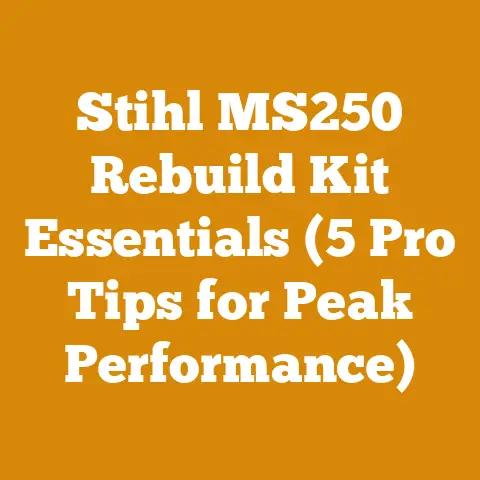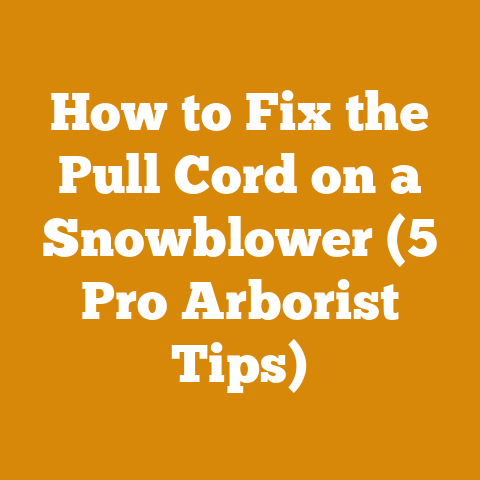Anti Fog for Safety Glasses (5 Must-Know Tips for Woodworkers)
Itchy eyes, a runny nose, and constant sneezing around wood dust – sound familiar? Allergies are a common woe for woodworkers, and while a good dust collection system is paramount, it often doesn’t catch everything. This is where proper personal protective equipment (PPE) becomes non-negotiable. And at the heart of that PPE, for me and countless others, are safety glasses. But what good are safety glasses if they’re constantly fogging up, obscuring your vision and potentially leading to a mishap with a spinning blade? I’ve been there, wrestling with foggy lenses in the middle of a critical cut, and it’s not a situation I recommend. Over the years, I’ve experimented with numerous anti-fog solutions and techniques. Some worked wonders, others were complete duds. I’m going to share my top 5 must-know tips for keeping your safety glasses fog-free, so you can focus on the task at hand, not your blurry vision.
Anti-Fog for Safety Glasses: 5 Must-Know Tips for Woodworkers
Foggy safety glasses are more than just an annoyance; they’re a genuine safety hazard. Reduced visibility can lead to mistakes, miscalculations, and, in the worst-case scenario, serious injuries. This guide is designed to provide practical, effective solutions to prevent fogging, ensuring you can work safely and efficiently.
1. Understanding the Science of Fog
Before diving into solutions, it’s essential to understand why safety glasses fog up in the first place. Fog is simply condensation – tiny water droplets forming on a surface. In woodworking, the combination of warm, moist air (from your breath and perspiration) and a cooler surface (your safety glasses lenses) creates the perfect environment for condensation.
- Relative Humidity: High humidity levels exacerbate fogging. I’ve found that on humid days, even the best anti-fog solutions need reapplication more frequently.
- Temperature Difference: The greater the temperature difference between your face and the ambient air, the more likely fogging is to occur.
- Lens Material: Some lens materials are more prone to fogging than others. Polycarbonate, a common material for safety glasses, tends to fog more easily than glass.
2. The Power of Pre-Treatment: Commercial Anti-Fog Sprays and Wipes
My first line of defense against foggy lenses is a high-quality commercial anti-fog spray or wipe. These products work by creating a thin, hydrophilic (water-attracting) layer on the lens surface, preventing water droplets from beading up and scattering light. Instead, the moisture spreads evenly, creating a transparent film.
- Types of Anti-Fog Products:
- Sprays: These are generally more cost-effective and allow for more controlled application. I prefer sprays with a fine mist to avoid oversaturation.
- Wipes: Convenient for on-the-go application, especially in the field. Look for individually wrapped wipes to prevent drying out.
- Gels: Some users prefer gels, as they tend to last longer between applications. However, they can be more prone to streaking if not applied correctly.
- Application Technique:
- Clean the Lenses: Start with clean, dry lenses. Use a microfiber cloth to remove any dust, dirt, or fingerprints. Avoid using paper towels, as they can scratch the lenses.
- Apply Sparingly: Apply a small amount of anti-fog spray or wipe to the lens surface. Follow the manufacturer’s instructions regarding application frequency.
- Spread Evenly: Use a clean microfiber cloth to spread the anti-fog solution evenly across the lens. Avoid excessive rubbing, which can damage the coating.
- Allow to Dry: Let the lenses air dry completely before wearing them. This allows the anti-fog coating to bond properly to the lens surface.
- Product Recommendations:
- Cat Crap Anti-Fog: A popular and effective spray for general use.
- Optix 55 Anti-Fog Treatment: Known for its long-lasting protection.
- Zeiss Anti-Fog Wipes: Convenient and reliable for quick application.
- Case Study: I once worked on a large-scale timber framing project in the Pacific Northwest, where humidity was consistently high. Standard anti-fog sprays lasted only a few hours. Switching to a heavy-duty anti-fog gel, specifically designed for industrial use, extended the protection to a full workday, significantly improving productivity and safety.
3. The DIY Approach: Soap and Water, Shaving Cream, and More
While commercial products are convenient, there are also several DIY anti-fog solutions you can try using household items. These methods are generally less effective than commercial sprays, but they can be useful in a pinch.
- Soap and Water: A classic and readily available option.
- Mix a Solution: Mix a few drops of mild dish soap with a cup of water.
- Apply to Lenses: Dip a clean cloth into the solution and gently wipe it across the lens surface.
- Rinse and Dry: Rinse the lenses with clean water and dry them with a microfiber cloth.
- Shaving Cream: Another surprising but effective option.
- Apply a Thin Layer: Apply a small amount of shaving cream to the lens surface.
- Spread Evenly: Spread the shaving cream evenly with a clean cloth.
- Rinse and Dry: Rinse the lenses thoroughly with clean water and dry them with a microfiber cloth.
- Glycerin: Glycerin is a humectant, meaning it attracts moisture. This can help create a thin, even layer of moisture on the lens surface, preventing fogging.
- Dilute Glycerin: Mix a few drops of glycerin with a cup of water.
- Apply to Lenses: Dip a clean cloth into the solution and gently wipe it across the lens surface.
- Dry Gently: Allow the lenses to air dry or gently wipe them with a microfiber cloth.
- Important Considerations:
- Residue: DIY solutions can sometimes leave a residue on the lenses, which can affect visibility. Be sure to rinse and dry thoroughly.
- Durability: DIY solutions typically don’t last as long as commercial products and may require more frequent reapplication.
- Lens Compatibility: Test any DIY solution on a small, inconspicuous area of your lenses before applying it to the entire surface. Some materials may react negatively to certain chemicals.
4. Ventilation is Key: Improving Airflow Around Your Eyes
No anti-fog solution is foolproof. Sometimes, the best approach is to improve ventilation around your eyes, reducing the amount of warm, moist air that reaches the lenses in the first place.
- Adjusting Safety Glasses: Ensure your safety glasses fit properly but aren’t too tight against your face. A small gap between the frame and your skin can allow for better airflow.
- Choosing Ventilated Frames: Some safety glasses feature built-in ventilation ports that allow air to circulate around the lenses. These are particularly useful for high-humidity environments or strenuous activities. I find these types of glasses especially helpful when I’m running my chainsaw for extended periods, where the exertion leads to increased perspiration.
- Face Masks and Respirators: If you’re wearing a face mask or respirator, ensure it fits snugly around your nose and mouth to prevent warm air from escaping upwards and fogging your glasses. I often use a nose bridge adjustment clip on my respirator to achieve a better seal.
- Headwear Adjustments: Adjust your headwear (hat or bandana) to allow for better airflow around your forehead. Sweat dripping onto your safety glasses can contribute to fogging.
- Technical Data: Studies have shown that safety glasses with ventilation ports can reduce fogging by up to 50% compared to non-ventilated models. The key is to find a balance between ventilation and protection from dust and debris.
5. Maintaining Your Safety Glasses: Cleaning, Storage, and Replacement
Proper maintenance is crucial for keeping your safety glasses in optimal condition and preventing fogging.
- Regular Cleaning: Clean your safety glasses regularly with a microfiber cloth and a mild lens cleaner. Avoid using abrasive cleaners or paper towels, which can scratch the lenses. I recommend cleaning my glasses at least once a day, or more frequently if they become dirty or smudged.
- Proper Storage: Store your safety glasses in a case or pouch when not in use to protect them from dust, scratches, and other damage. Avoid leaving them in direct sunlight or extreme temperatures, which can damage the lenses and coatings.
- Replacing Scratched Lenses: Scratched lenses not only impair vision but also provide a surface for moisture to condense on. Replace scratched lenses promptly to maintain optimal clarity and prevent fogging.
- Checking for Coating Damage: Inspect your safety glasses regularly for signs of damage to the anti-fog coating. If the coating is peeling or worn, it’s time to replace the glasses.
- Lens Replacement Specifications: Depending on the type of safety glasses, replacement lenses may be available. Ensure that replacement lenses meet ANSI Z87.1 standards for impact resistance. Lens thickness should be consistent with the original specifications to maintain structural integrity. For example, polycarbonate lenses commonly used are required to be at least 2.0 mm thick to meet high-impact standards.
- Industry Standards: Adhere to OSHA guidelines for PPE maintenance and replacement. Regularly inspect safety glasses for damage and replace them as needed. Keep a log of inspections and replacements to ensure compliance.
- Personal Anecdote: I once continued to use a pair of safety glasses even after the anti-fog coating had worn off, relying solely on wiping them down frequently. However, during a particularly intricate carving project, the constant fogging led to a minor slip, resulting in a small cut on my hand. This incident was a stark reminder of the importance of maintaining and replacing PPE when necessary.
Bonus Tip: Anti-Fog Cloths – A Quick Fix
Anti-fog cloths, often made of microfiber infused with anti-fog chemicals, are handy for a quick wipe-down when you’re on the go. They’re not as powerful as sprays, but they’re compact and reusable. Just remember to store them in a sealed bag to prevent them from drying out.
Summary: The Fog Stops Here
Keeping your safety glasses fog-free is a critical aspect of woodworking safety. By understanding the science of fogging, using effective anti-fog solutions, improving ventilation, and maintaining your glasses properly, you can ensure clear vision and a safer working environment. Remember, safety should always be your top priority.
- Key Takeaways:
- Fog is caused by condensation due to temperature differences and humidity.
- Commercial anti-fog sprays and wipes are the most effective solutions.
- DIY solutions can be useful in a pinch, but are generally less durable.
- Ventilation is key to reducing fogging.
- Proper maintenance and replacement of safety glasses are essential.






